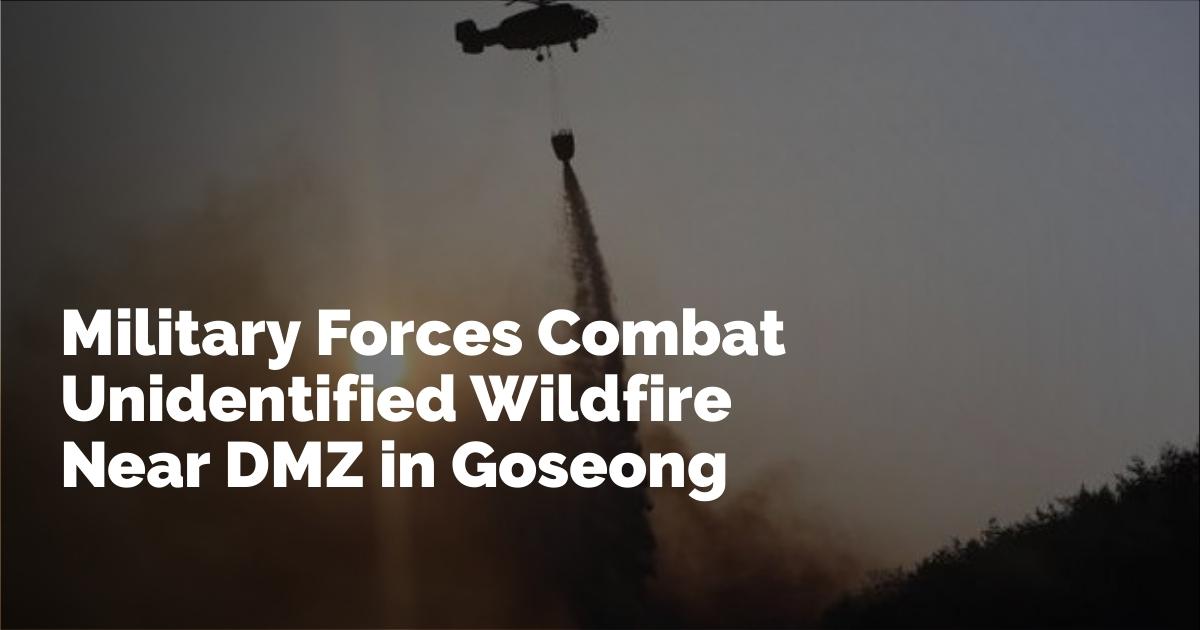Unidentified Wildfire Erupts in the DMZ
Recently, a wildfire of unknown origin has erupted in the Demilitarized Zone (DMZ) near Goseong. The DMZ, a buffer zone between North and South Korea, is an area where military activity is typically restricted. Yet, due to the unforeseen nature of the wildfire, military forces have been deployed to tackle the blaze and prevent it from spreading further.
Challenges of Firefighting in the DMZ
Fighting a wildfire within the DMZ presents unique challenges. The zone spans a stretch of land that is around 4 kilometers wide and is heavily vegetated and infrequently accessed, lending difficulty to conventional fire control efforts. Furthermore, the area's status as a military buffer zone normally restricts human activity, making access more complicated.
The terrain is rugged and the vegetation dense, which means that straightforward fire suppression methods, such as using ground firefighting crews, are constrained. Moreover, environmental considerations play a role in determining the use of resources, including the deployment of aerial fire suppression techniques. The complexities of deploying in this high-stake area necessitate exceptionally robust strategies that ensure safety along the contested border.
Environmental Impact and Concerns
Wildfires not only pose immediate dangers such as loss of life and destruction of property but also contribute to long-term environmental degradation. The flora and fauna in the DMZ have existed for decades without significant human interference, nurturing a unique ecosystem. Introducing fire to this unspoiled environment risks altering ecological balances and destroying habitats that are home to many rare species.
Efforts to extinguish the fire are urgent to preserve this ecological preserve. The presence of numerous landmines in the region adds another layer of complexity to firefighting efforts. The potential for these old explosives to detonate in the heat and flames poses an additional hazard to personnel and equipment, requiring careful navigation and planning.
Military Involvement and Coordination
The involvement of military forces has become essential, both as a provider of manpower and due to their logistical and strategic capabilities. The military's role in this situation underlines their dual function: national security and aid in disaster situations. Collaboration with local firefighters and environmental agencies is necessary to maximize resources and expertise.
These efforts are coordinated at high levels to ensure effectiveness and minimize risk, given the sensitive location in which the wildfire is occurring. The quick organization and deployment of military units have been critical to containing the fire, which if left unchecked, could broaden and lead to disastrous consequences.
Future Prevention and Preparedness
This incident has also sparked conversations about future prevention measures and preparedness plans to handle similar situations. Establishing rapid-response teams and integrating technology, such as satellite imagery for early detection and drones for safe reconnaissance, can be invaluable in these efforts. Emphasizing preventive strategies is essential to safeguard this delicate area from similar threats moving forward.
Enhancing inter-Korean dialogue about cooperative measures to protect the environmental sanctity of the DMZ can also be beneficial. Engaging in joint environmental management initiatives may facilitate stronger relationships and foster peace through shared responsibilities in preserving ecological heritage.
Conclusion
The wildfire near Goseong within the DMZ is a reminder of the natural challenges that can arise even in politically tense areas. The response illustrates the need for carefully coordinated efforts across sectors during such emergencies. With the conflation of military readiness and environmental preservation, strategies employed here may set precedents for managing future natural disasters in sensitive and restrictive territories worldwide.
출처 : Original Source

